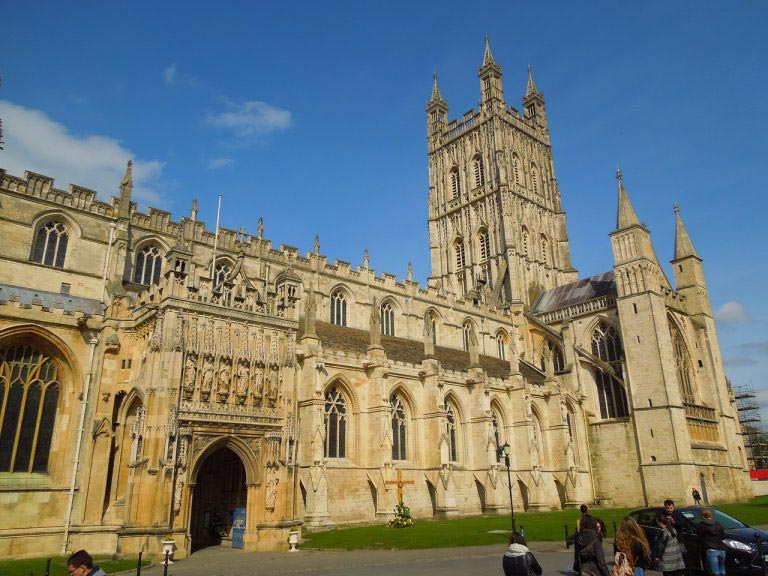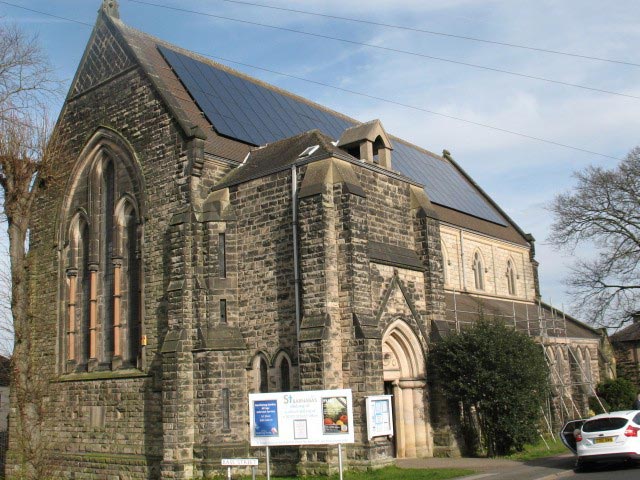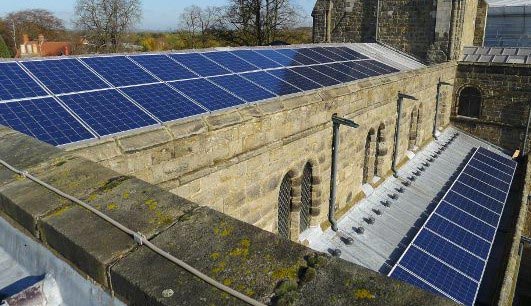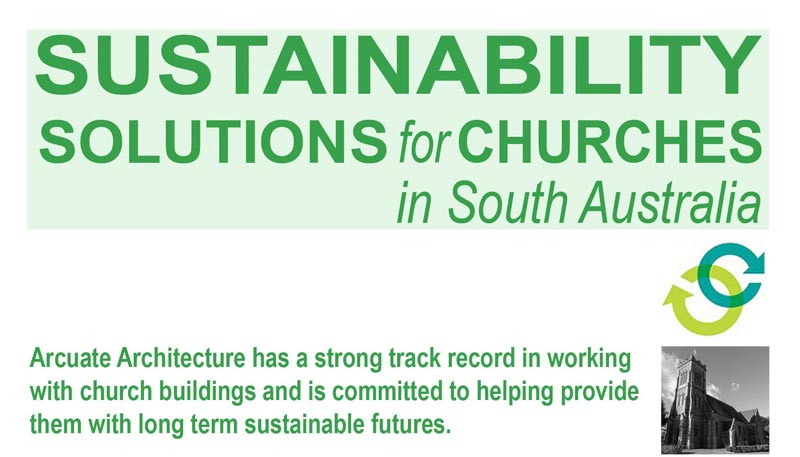Guidance Note 13 – Energy Efficiency in Church Buildings
Part 3: Using Solar Panels / PVs on Heritage Churches
Places of worship in South Australia often have large north-facing roof slopes, which can appear to be ideal for generating energy from solar/ photovoltaic (PV) cells. Such roofs are often very visible and are an important part of what makes the buildings and their settings historically significant. To preserve that heritage significance, the visual impact of PV installations should be minimised, which can be done by placing PV panels behind parapets or on inward-facing roof slopes. Alternative locations, such as on church hall roofs, or having ground-mounted solar collectors, should also be considered.
Small PV units are also available that are intended to look like natural slates, and that fit within the same plane as existing roof slates. On places of worship of high heritage significance, the visual impact these ‘solar slates’ may not be acceptable to councils and Heritage SA. Also, they have a shorter lifespan than real slates so the cost of more frequent maintenance, repair and replacement must be taken into account.
Even the best designed and managed installations are likely to cause some damage to existing historic fabric. Fixing, maintaining and decommissioning PV installations needs to be planned and agreed before installation takes place, and those granting authority for works must be completely satisfied that the panels will not impede rainwater disposal or obstruct crucial maintenance.
The big challenge of PV panels is, of course, that they need to be exposed to sunlight to be effective and are therefore likely to be visible. Indeed, congregations may prefer that an installation is seen so they can publicly demonstrate their commitment to addressing the threat of climate change, even where less visible alternatives are available.

Because installation of PV panels on a heritage church may have a material effect on its external appearance it will require planning approval as well as listed building consent. Where climate change measures impact upon heritage assets, the benefits to society in terms of climate change remediation must be weighed against the harm caused to the heritage asset.

Where conflict between climate change objectives and the conservation of heritage assets is unavoidable, a balance needs to be found. The public benefit of mitigating the effects of climate change must be weighed against any harm to the significance of heritage assets in accordance to South Australian Legislation – the Development Act 1993 and the Heritage Places Act 1993 in particular. Overall, the greater the harm to the significance of the heritage asset, the greater the justification required for the works.
Before investing in PV installations, though, congregations are strongly advised to develop a wider energy strategy for their buildings, by doing the following:
- Commission an audit of existing energy use that takes into consideration the embodied energy and carbon of existing and new equipment and assesses the place of worship’s current carbon footprint.
- Identify and implement measures to reduce the existing level of energy use, for example changes in heating/ cooling and lighting patterns, improvement of equipment such as boilers and light bulbs, better insulation and the elimination of drafts (without impeding proper ventilation).
- Consider switching to a ‘green energy’ supplier.
- Assess the potential of other microgeneration equipment.

- Does the Heritage Impact Assessment supporting the proposals provide sufficient information to enable the works to be understood in context?
- Does the proposal address the missional goals of the congregation as set out in its Parish Mission Action Plan?
- Is there a compelling justification for the work?
- What is the visual impact on the building and its setting?
- Will the fixing of the equipment (including cabling, pipework, etc) damage significant historic fabric?
- Are the works reversible?
- Has a professional adviser, such as a heritage architect, been engaged to inform the design and the routing of cables, and to advise on the technical issues in relation to routing, fixing, etc?
- Have other energy saving measures or locations with less impact been considered, implemented or shown not to be suitable?
- Do the proposed PVs form part of a wider energy strategy for the place of worship, which addresses reducing energy consumption and wastage?
- Is the proposal of net environmental benefit?





